Vaser liposuction, also known as ultrasound-assisted liposuction (UAL), is a cosmetic surgery procedure that focuses on sculpting and contouring the body.
It’s an evolution of the traditional, suction-assisted liposuction that gets rid of the superficial and deep layers of subcutaneous fat tissue. In addition, it can be used to reveal the underlying muscle lining, making your frame appear more athletic and muscular.
Vaser also allows for faster recovery with a lower risk of complications than classic liposuction. Still, there are instances when the latter is preferred.
In this guide, you’ll learn everything you need to know about Vaser so you can make the right choice.
What Is Vaser Liposuction?
VASER stands for vibration amplification of sound energy at resonance.
Unlike traditional liposuction, it uses ultrasound energy to break down (or emulsify) the fat cells in a target area.
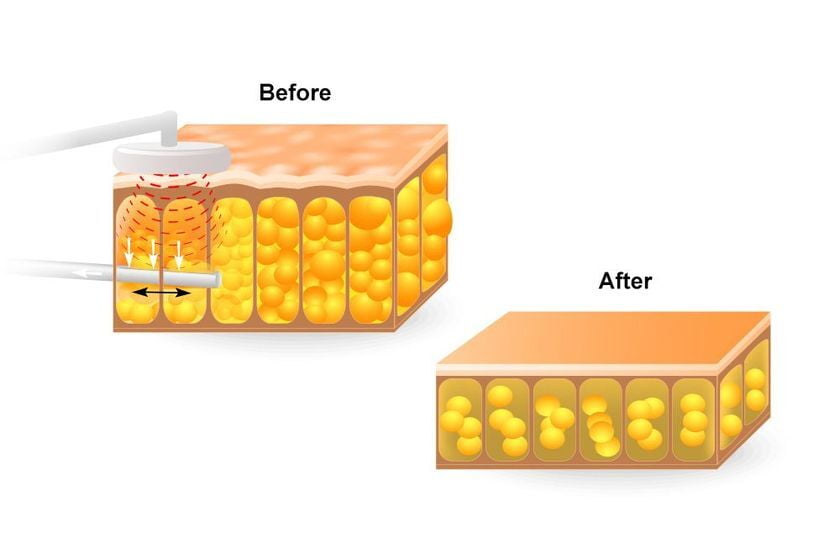
It was pioneered by Michele Zocchi in the early 90s for the “selective destruction of excess adipose tissue.”
However, this procedure doesn’t just get rid of fat cells. It may even tighten or slightly lift the skin.
That’s because the high-frequency vibration of the ultrasound also produces heat energy. And that, in turn, can stimulate the production of new collagen in the skin.
However, it should be noted this skin-tightening effect may be mild at best. If you have poor quality, loose skin, you’ll need other surgical (lift or tummy tuck) or non-surgical interventions (radiofrequency, laser, cryotherapy or ultrasound).
With Vaser liposuction, it’s also possible to obtain viable fat cells from the body, making it possible to graft them to other parts.
For instance, using Vaser, abdominal fat can be removed and grafted to the buttocks for a Brazilian Butt Lift.
What Are The Different Types of Vaser Liposuction?
When it comes to Vaser liposuction, there are a few terminologies that you need to be familiar with.
Hi-Def Vaser Liposuction
According to a study published in the Aesthetic Surgery Journal, high-definition VASER liposuction is a procedure that reveals an “athletic and attractive surface anatomy.”
Alfredo Hoyos developed the technique from a 1993 paper that described abdominal etching (essentially used to create abs) with liposuction.
According to him, high-definition Vaser had a more “3-dimensional approach” as it took other muscle groups into account.
With high-definition Vaser, the muscle definition of the target area is revealed so that resembles an athletic-looking body.
The main difference between Vaser and high-definition Vaser is that Vaser removes fat from a specific area only, while high-definition Vaser makes the outline of underlying muscles visible by removing fat.
4D Vaser Liposuction
In 4D Vaser liposuction, hi-def Vaser is combined with fat grafting to other areas of the body (like the buttocks).
According to its pioneer John A. Millard, the shape and the movement of the muscles are also taken into account when this procedure is being performed.
Mid-Definition Vaser Liposuction
According to a study published in Plastic and Reconstructive Surgery Global Open, mid-definition liposuction enhances the outline of the abdominal muscles.
The focus is on the middle section of the body, hence the name. And when ultrasound technology is used to do this, it’s called mid-def Vaser.
360° Vaser Liposuction
360 liposuction refers to fat removal from the entire tummy, including the front and the back.
Of course, when that’s done using Vaser, it’s called 360 Vaser liposuction.
How Does Vaser Liposuction Work?
Vaser liposuction involves three processes:
- Cavitation – Ultrasound expands “microbubbles” around fat cells to break them
- Mechanical – Ultrasound probe breaks the fat cells touching it
- Thermal – Ultrasound energy heats up and destroys the fat cells
It happens with the injection of a “tumescent fluid” and the insertion of the probes.
The tumescent fluid injected into the target area contains air bubbles. And the ultrasonic frequencies from the probes enlarge these air bubbles.
They keep on increasing in size until they burst; the energy released from that causes the fat cells to break. This is cavitation.
Mechanical is when the fat touching the probe breaks down due to the vibration of the probe. And lastly, the heat of the ultrasound energy causes the fat cells to break down.
What Areas Will Vaser Liposuction Target?
Vaser liposuction can be performed in the following areas:
Neck & Chin
Since Vaser is less invasive than classic liposuction (it uses smaller cannulas), it can be better suited for more delicate areas like the chin and neck.
People often complain of a double chin or a turkey neck in these areas. Vaser can fix these issues more discreetly.
Chest
Men with gynecomastia are more likely to undergo Vaser liposuction in the chest.
In addition to getting rid of the excess fat, they can also opt for hi-def Vaser to make their chest muscles more visible. It can make the upper body look more toned.
Back
Many people find the love handles, back rolls and bra bulges on their backs unsightly.
With Vaser, it’s possible to fix these problems as well.
Your surgeon will probably address the sides of the back as well for better results.
Arms
Vaser liposuction can also get rid of small pockets of fat from the arms and make them look more toned.
It can be a suitable option for someone who has bingo wings because of excess fat in their arms.
Tummy
The tummy or the abdomen is among Vaser’s most commonly targeted areas.
Many people are bothered by the presence of fat pockets in their stomachs as it stops them from achieving their desired body contour. Sometimes, even exercise and/or diet can’t get rid of this fat.
In that case, you can benefit from a Vaser liposuction. Although, you can also take things one step further by getting abs etched onto your abdomen.
Hips
For the hips, 4D Vaser is more common among women as it grafts fat cells in the buttocks for added curvature.
However, it can also involve removing fat cells from the sides to create dents that become visible from glute exercises.
Thighs
Banana roll fat in the thighs is a common complaint for which Vaser liposuction is quite suitable.
It can also be used to create a thigh gap, which is desired by some people.
What Is Vaser Liposuction Procedure?
The liposuction procedure starts with anesthesia. The anesthesiologist will administer general anaesthesia or local anaesthesia with sedation.
It depends on the size of the treatment area and/or the number of areas being treated. If the target area’s quite small, local anaesthesia will be enough for Vaser.
In that case, you will be awake during the surgery. You will, however, not feel any pain.
However, it should be noted that your surgeon may prefer performing liposuction under general anesthesia even if the treatment area is small.
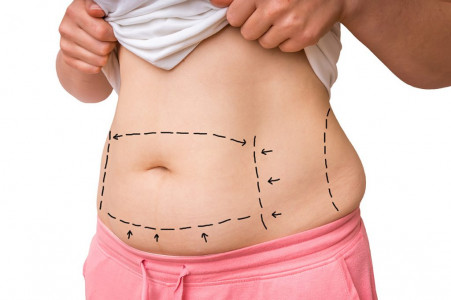
Once the anaesthesia takes effect, tumescent fluid (also contains anaesthetics) will be injected into the target area. This helps reduce swelling and also puffs up and releases the fat cells, making it easier to remove them.
Following that, the tumescent fluid is allowed to do its work for around 15 minutes. And then, 3-4mm incisions will be made to insert the ultrasound probes into the skin.
The surgeon will take care not to touch the probe to your external skin to avoid any injury. However, once inside, the probes emulsify the fat cells, which are then removed by a cannula.
The entire procedure can take around 2 hours, but this can vary depending on the surgical area and the fat deposits there.
Before And After Results Of Vaser Liposuction
Vaser liposuction results won’t be visible immediately after the surgery. For that, patients usually have to wait for 3-6 months as post-op side effects can take some time to subside.
Following are the results of Vaser liposuction on different body areas at different recovery stages.
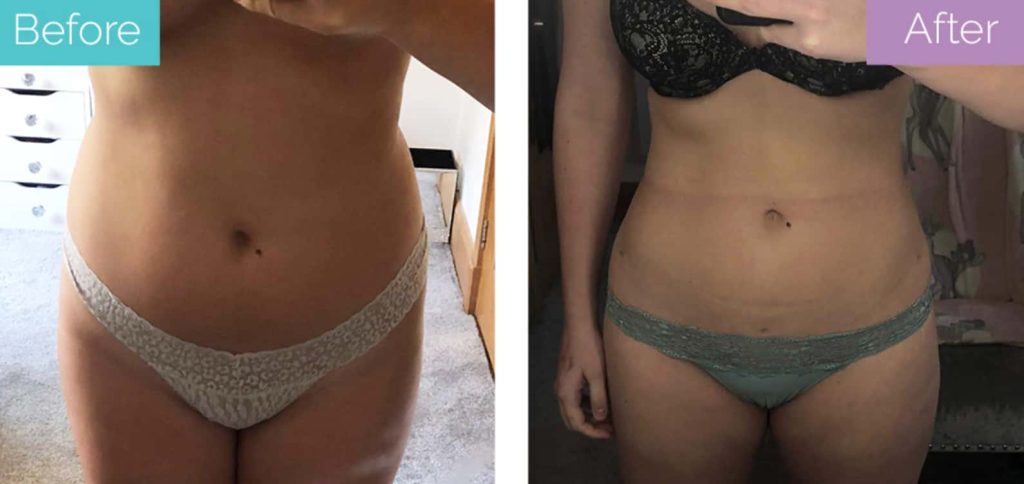
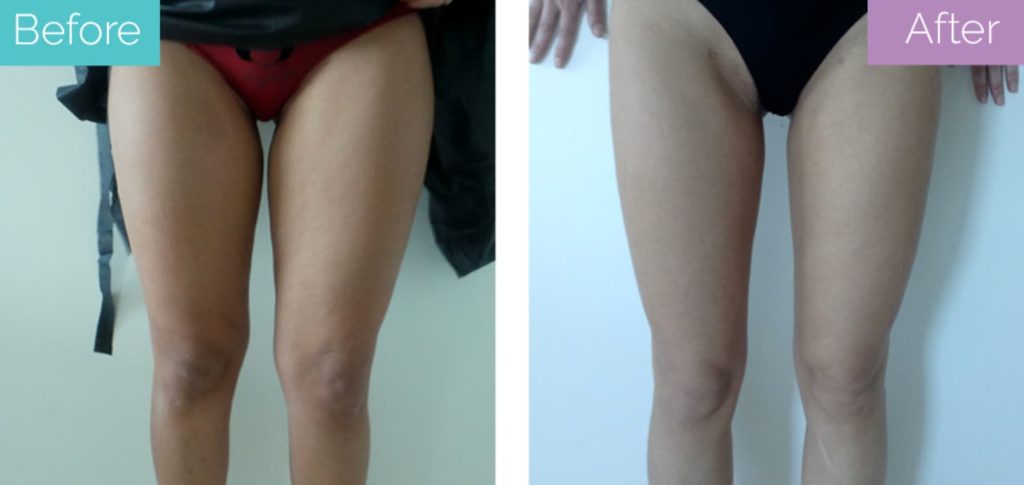
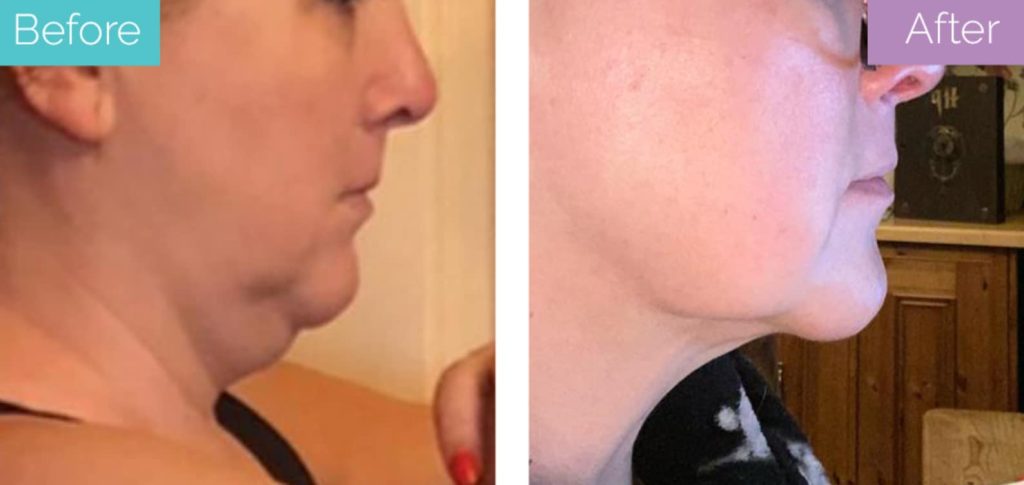
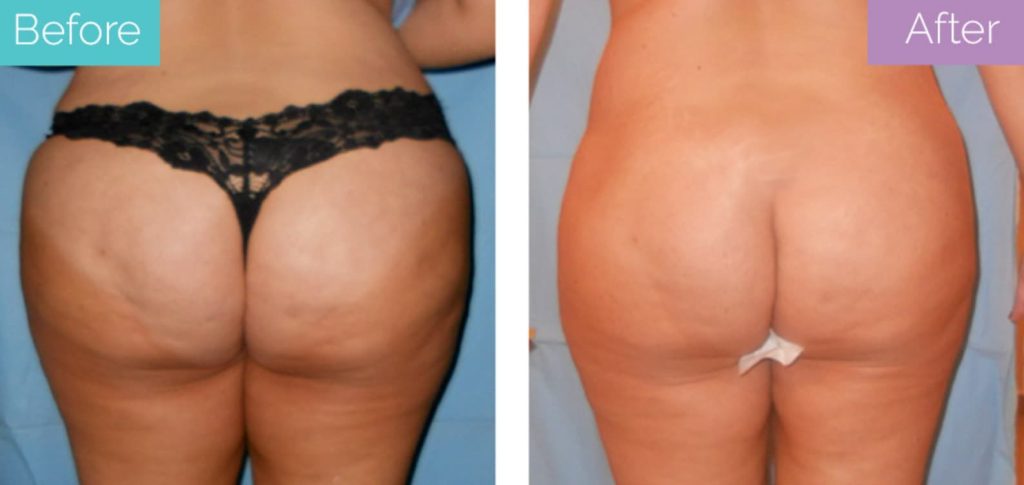
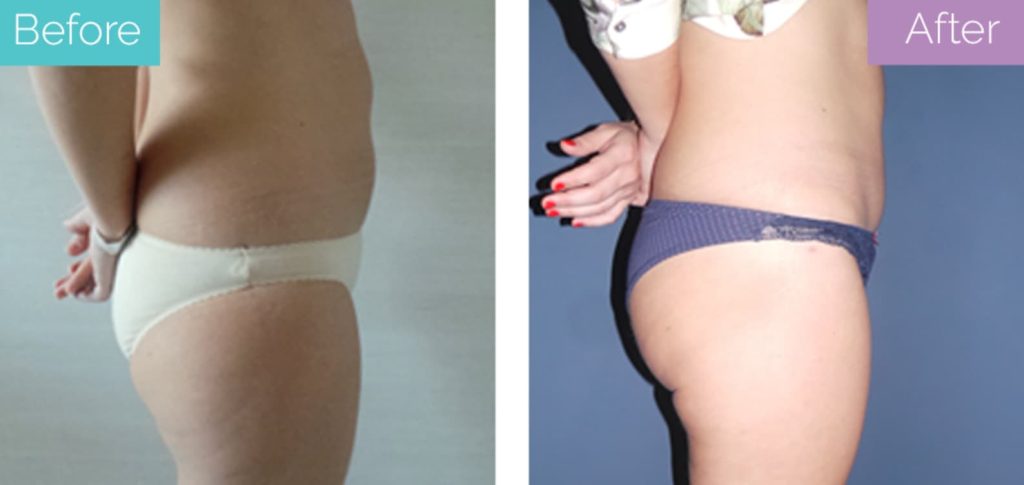
Keep in mind the results can vary between patients depending on their age, general health, lifestyle and skin quality.
How Safe Is Vaser Liposuction?
According to a study published in Aesthetic Plastic Surgery, Vaser is safe and effective. Additionally, the researchers concluded that compared to traditional liposuction, Vaser is less prone to complications and has an equal or higher patient satisfaction rate.
Still, Vaser is an invasive surgery, and just like every other surgery, it can carry certain risks.
Some of the reported risks and complications of this surgery include:
- Skin burns
- Seroma
- Hematoma
- Skin irregularities (dimples, dents)
- Skin discolouration
- Fat necrosis
- Scarring
You may be able to reduce the risk of these complications by finding a qualified and board-certified plastic surgeon and following their aftercare instructions.
For instance, many patients worry about loose skin after liposuction. However, if the surgeon correctly assesses the quality of your skin (and how it’ll look post-op), they’ll recommend additional procedures for the best results.
How Long Will It Take To Recover?
It can take around 1 week to recover from Vaser liposuction. You might experience some temporary side effects after the surgery, such as:
- Bruising
- Swelling
- Bleeding
- Pain
You might also have surgical drains for a few days after the surgery. These can prevent the accumulation of excess fluids, blood and pus in the body. However, if the surgeon thinks that you won’t need drains, the treatment plan can be changed accordingly.
Other than that, your surgeon might also recommend wearing a compression garment for 4-6 weeks. It’s believed to reduce the risk of seroma while helping with swelling.
While the swelling will subside after some time, you can help it go away more quickly by staying hydrated. That’ll help flush out the surgery fluids.
The results of a Vaser liposuction are permanent, provided you maintain a stable weight and have an active and healthy lifestyle.
How Much Does Vaser Liposuction Cost?
The cost of Vaser liposuction in one area can range from £3,500 to £5,000 in the UK. It can depend on the number of areas being treated. Getting Vaser in multiple areas will lower the cost per area.
In addition to that, the price of your surgery will be determined by the location of the clinic (for instance, Vaser lipo in London will probably cost more than in Cardiff).
The experience of the surgeon and whether you will be receiving local or general anaesthesia will also impact the total cost of the surgery.
Although, if you’re looking to save money, you can consider medical tourism. The price of Vaser liposuction in Turkey starts from £1,500/area. It’s even inclusive of medication and aftercare.
What Is The Difference Between Vaser Lipo And Liposuction?
In Vaser liposuction, fat is broken down by ultrasound energy, while in classic liposuction, it is broken down by a cannula moving back and forth.
A key feature of Vaser liposuction, however, is the ability to sculpt and contour the body in a way that makes it look more athletic.
In general, fat removal is more precise with Vaser, and the recovery is also quicker.
Vaser liposuction results in 26% less blood loss than traditional liposuction, according to a study published in Plastic and Reconstructive Surgery.
However, one of the drawbacks of this surgery is that it’s not suitable for removing relatively large pockets of fat. In that case, it would be better to have traditional lipo.
Here’s a summary of the differences between the two procedures:
| Vaser Liposuction | Traditional Liposuction | |
| Procedure | Fat is broken down and liquified with ultrasonic sound waves | Fat is broken down by moving a cannula back, and forth and this fat is then vacuumed out |
| Anaesthesia | General or local with sedation | General anaesthesia |
| Surgery Time | Around 2 hours (but depends on target area and fat deposits) | Around 2 hours (but depends on target area and fat deposits) |
| Candidates | Remove small pockets of fat with body contouring | Remove relatively large pockets of fat |
| Downtime | 1 week | 1-2 weeks |
| Results | Permanent Visible after 3-6 months | Permanent Visible after 3-6 months |
| Cost | In the UK, £3,500-5,000 In Turkey, £1,500 | In the UK, £3,500-5,000 In Turkey, £1,500 |
Vaser Liposuction Is Available In Turkey
Turkey is a popular destination for Vaser liposuction. It’s due to the fact that patients can get a very high-quality procedure for around 3-5 times less than in the UK.
This type of liposuction in Turkey is cheap because of the currency exchange and comparatively low cost of living. It’s not because of poor quality.
Just make sure to choose a licensed and reputable surgeon who operates in a registered facility. Also, since follow-up is important, check if that and aftercare are included in your treatment plan.
Longevita Has Experienced Vaser Liposuction Surgeons, Book A Consultation Today
Having offered cosmetic surgery for over a decade, Longevita has high-skilled and experienced plastic surgeons.
Our liposuction specialists are also members of the International Society of Aesthetic Plastic Surgery (ISAPS) and the Turkish Society of Plastic Reconstructive and Aesthetic Surgeons.
They have a combined experience of over 45 years. Therefore, you can rely on them to get excellent results.
If you want our surgeons to prepare a customised treatment plan for you, don’t hesitate to get in touch with us.
Reviewed and Approved by Prof Fuat Yuksel
FAQ
Is Vaser better than liposuction?
If you want to get rid of small fat pockets and contour your body, Vaser can be a better option than classic liposuction. Its recovery is quicker, and its scars are smaller.
How much fat can be removed with Vaser liposuction?
Vaser liposuction can remove about 4 litres of fat from the body. However, keep in mind that this surgery is not for weight loss.
Does the fat come back after Vaser liposuction?
The results of a Vaser lipo are permanent. However, you can store fat in the treatment area again if you don’t maintain your weight.
Does Vaser liposuction tighten skin?
The heat generated by the ultrasound energy during Vaser can slightly tighten the skin. But if you have a lot of loose, hanging skin, you’ll probably need another lifting surgery.
Is Vaser liposuction worth it?
Vaser is a safe and effective procedure that can give more than satisfactory results. Therefore, it can definitely be worth it.




